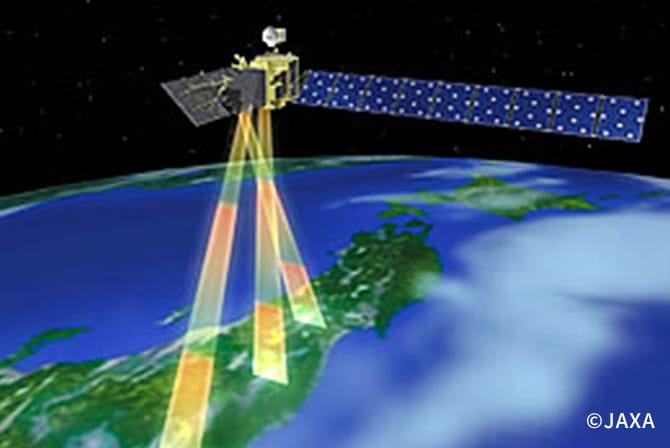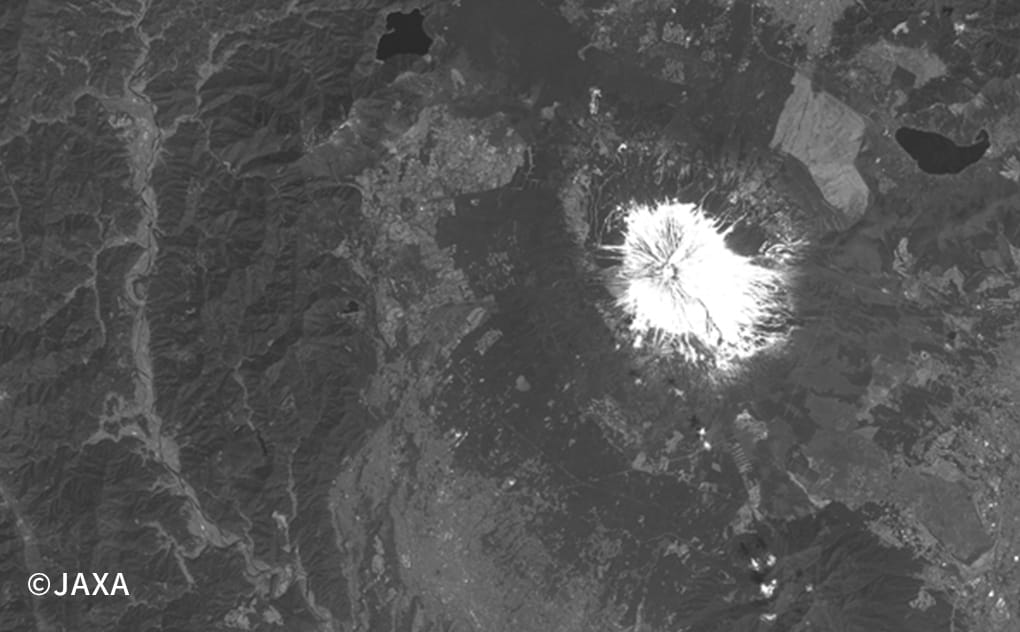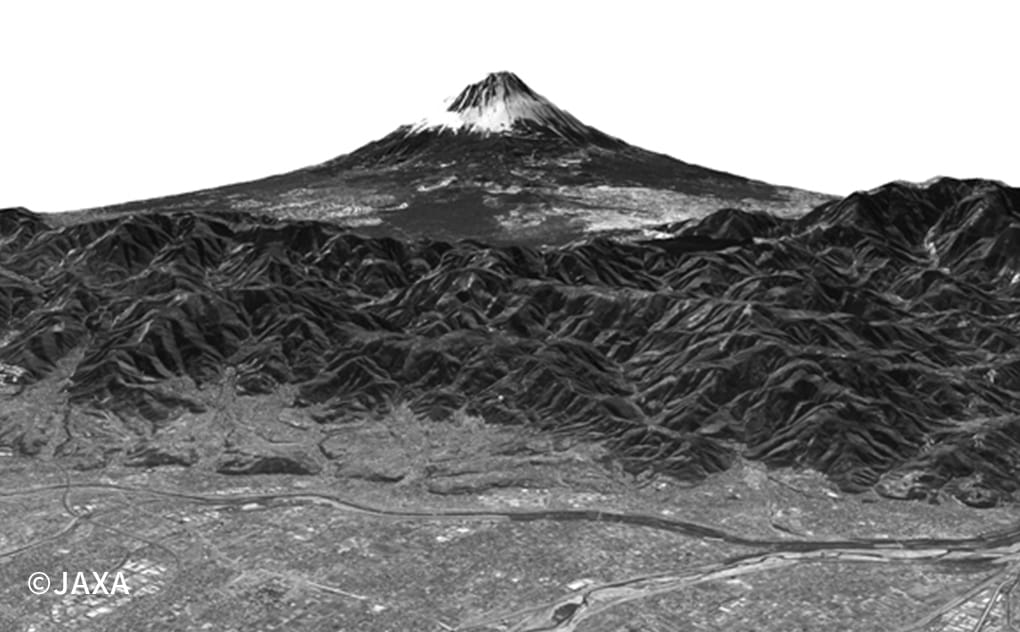PRISM

PRISM is an optical instrument which observes the earth surface with a spatial resolution of 2.5 m in visible bands. Its data are used for creating high-precision digital elevation models (DEM).
The instrument has three optical systems for acquiring topographic data with altitude information. It acquires data in three directions―forward, nadir and backward―along the satellite track at the same time.
Each optic system consists of three off-axis mirrors for push-broom scanning. The swath for nadir-view observation is 70 km, while that of forward and backward views is 35 km.
The forward- and backward-looking radiometers are inclined ± app. 24° from the geocentric direction in the flight direction. This enables frequent acquisitions of highly-accurate topographic data.
PRISM Main Specifications
| No. of bands | 1 (panchromatic) |
|---|---|
| Wavelength | 0.52~0.77μm |
| No. of optics | 3 (nadir-, forward- and backward views) |
| Stereoscopic B/H ratio | 1.0 (between forward and backward views) |
| Ground resolution | 2.5m (nadir view) |
| Swath | 70km (nadir view only)/ 35km (triplet mode) |
| Signal-to-noise ratio | >70 |
|---|---|
| Spatial frequency transfer function |
>0.2 |
| No. of detectors | 28,000/band (Swath 70km) 14,000/band (Swath 35km) |
| Pointing angle | ±1.5°(triplet mode, cross-track direction) |
| Bit length | 8 bits |
Observation Mode
| Mode1 | Triplet observation in forward-, nadir- and backward-views (with a swath of 35 km) |
|---|---|
| Mode2 | Nadir view(70 km) + backward view (35 km) |
| Mode3 | Nadir view (70km) |
| Mode4 | Nadir view (35km) + Forward view (35km) |
| Mode5 | Nadir view (35km) + backward view (35km) |
| Mode6 | Forward view (35km) + backward view (35km) |
|---|---|
| Mode7 | Nadir view (35km) |
| Mode8 | Forward view (35km) |
| Mode9 | Backward view (35km) |
Definitions of processing levels of PRISM products
PRISM data are available in Level 1A, Level 1B1 and Level 1B2, which are generated by applying radiometric and geometric corrections to the acquired data.
| Level | Definition |
|---|---|
| 1A | This is PRISM raw data, generated by subset of the observed data into scenes and applying decompression and line generation. Radiometric and geometric information necessary for Level 1B processing and onward is added. |
| 1B1 | This product is generated by applying radiometric correction to the Level 1A data and adding absolute correction coefficients. Geometric and other necessary information for Level 1B2 processing and onward is added. |
| 1B2 | This product is generated by applying geometric correction to the Level 1B1 data. The following correction options are available. R:Geo-referenced G:Registered to maps. Geo-coded. |
PRISM imagery
-


This image over Mt. Fuji, Japan, was acquired by the Panchromatic Remote-sensing Instrument for Stereo Mapping (PRISM) on-board ALOS on August 20, 2006. PRISM is an optical instrument which observes the earth with a ground resolution of 2.5 m in visible bands. It observes an area in three directions (forward, nadir and backward to the satellite's flight direction) simultaneously, which makes it possible to frequently acquire high-precision topographic data.
-


This bird's-eye view image was processed by extracting height information from each of the backward-, nadir- and forward-view images taken by PRISM and laying the information onto the nadir-view image. (Observation date: February 14, 2006, daytime)
The bottom of the image covers the Kofu basin with clear townscape, roads and rivers. The Motosu lake is visible in the center toward the right. In the back are Mt. Fuji with snow cap and the Fuji Subaru Line leading to the summit. The image is vertically exaggerated with a factor of 2.





